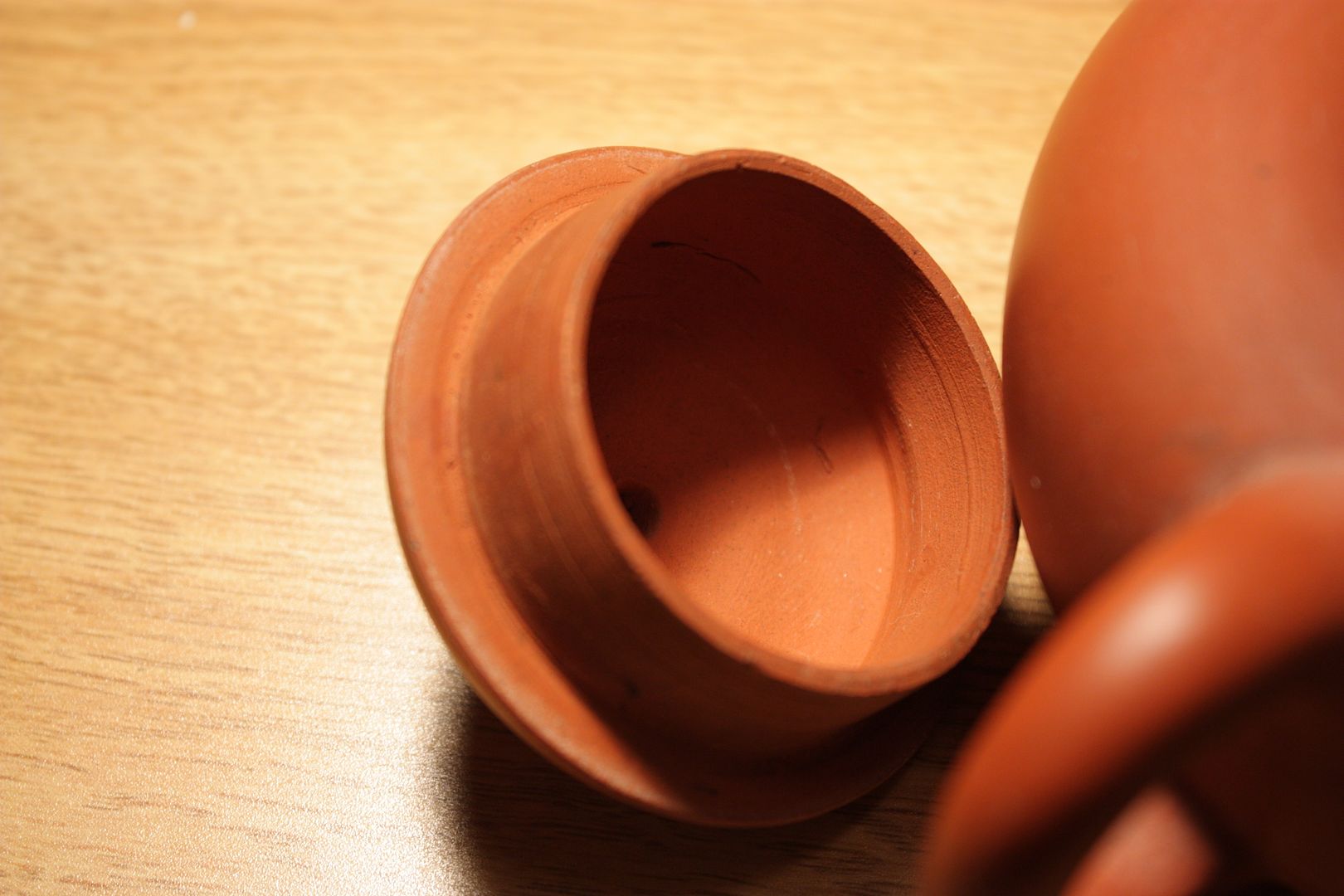More teaware






This is a chaozhou teapot, uncharacteristically large for something of this type. It’s a typical 300-400ml size. I’ve never seen one that big before. It’s supposedly from turn of the century — bought from someone who claimed it was a grandma’s leftover. It looks the part though, as it has an older feel and look. Only lightly used. The chawan is there for size comparison.

 RSS - Posts
RSS - Posts
8 responses so far ↓
Anonymous // November 13, 2009 at 1:50 am |
I notice that it has a single hole for a filter. I seem to remember reading somewhere (maybe here?) that older teapots generally had single holes, and the 7-hole and ball filter styles are more modern. Does that sound right? I’m wondering because I recently bought an Yixing pot that the vendor claimed was 80 years old, though unused, and it has a 7-hole filter. I’m inclined to doubt his claim of 80 years because of the filter thing, because the inside is neater than I would expect, and because I would have expected the price to be higher if it was really that old. I know you can’t tell much without pictures, but any comments?
Anonymous // November 13, 2009 at 1:20 pm |
The lid is definitely wheel thrown, and not just turned on a lazy susan to smooth out the slip.
When you throw of the hump, you make a bowl, and then push the rim in to make the skirt of the lid.
But when you push it in, it makes that little ledge inside where the skirt and dome connect because you’re moving the clay from only the upper part of the bowl. I see that all the time when I do lids that way. Also, the bottom of that pot is trimmed and cut like it’s wheel thrown.
Now.. chaozhou pots are apparently often thrown on a wheel, so that might be right.
But the question is did they use powered wheels in 1900’s
Unless turn of the century means… 2000?
MarshalN // November 13, 2009 at 2:19 pm |
Number of holes in and of itself is not a good indicator of much of anything. I mean, a ball shaped filter is not likely to be old, but a one holed pot can be brand new.
Walt: Do you mean to say that this is definitely thrown on a powered wheel? No, turn of century means 1900s. From what I’ve seen, their wheels can go pretty fast, and not powered. There are these mechanisms where you have what looks like a gas pedal and you keep stepping on it and it keeps the wheel going while you throw.
Anonymous // November 14, 2009 at 11:32 pm |
What you’re talking about is a treadle wheel.
I’m not sure they were used much in the 1900’s.
When I mean.. powered, I mean like.. something that spins by itself.
There’s another method of “pottery wheel” where you turn something on a lazy susan.
But you can’t really push on it with alot of force. Like the guy on the left in this video.
Anonymous // November 15, 2009 at 8:51 am |
Over the weekend here in Bangkok, I saw 3 Chaozhou pots that were about 100 years old. All were single holed and very similar in clay quality to the pot you illustrate, but, much, much smaller in size, about 120ml. Quite lovely pots, thin walled, and, expertly crafted. I’ve seen some yixing pots with multi-hole filters that were at least 50 years old but am not sure if this was done 100 years or so ago. I am pretty sure that wheel thrown pots of Chaozhou origin were done at this time.
MarshalN // November 15, 2009 at 6:44 pm |
Tead Off — it’s pretty typical for chaozhou pots to be small. I’ve never seen one this big, actually. It’s fairly unusual.
I’m pretty sure treadle wheels or some variation were there already. Chinese have a long history of making pottery that requires some sort of spinning mechanism to do well, no?
Anonymous // November 15, 2009 at 11:11 pm |
One of the differences I noticed immediately between the Chao Chou pots and zhuni pots of the same period is the lustrousness of the clay. The zhuni seem to glow and the Chao Chou seem duller. But, I think there was more freedom in the shapes of the Chao Chou with design elements I have never seen in yixing pots. It’s all interesting!
Anonymous // November 17, 2009 at 4:00 pm |
Don’t get me wrong. The chinese have an amazing pottery history.
I have no idea if they did or did not have a more or less self spinning wheel.
I do know that your pot was made on a self spinning wheel though.
Human ingenuity is quite amazing really.
Even today, there are people in the world that can use a wagon wheel to make pottery.
The question is just, is that how they did it in 1900’s, or would they have made them by hand/paddle.